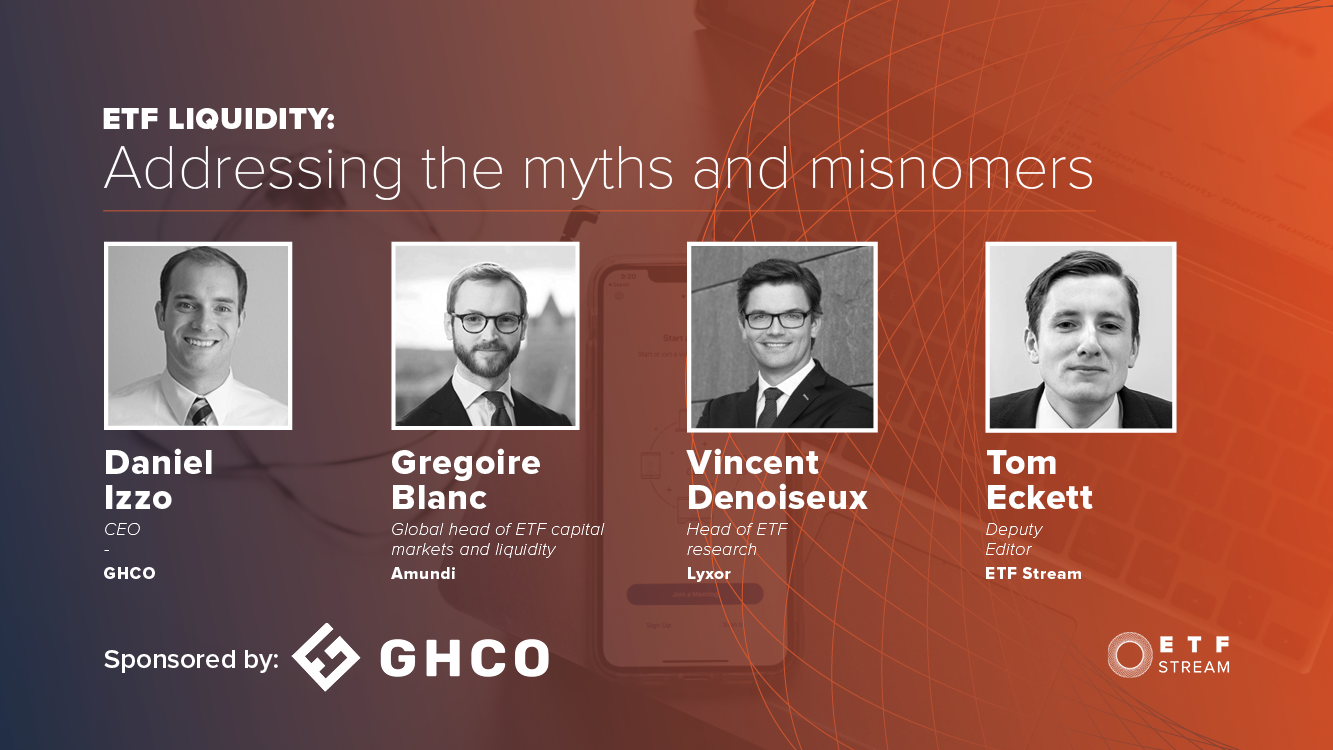Reflecting on the volatile periods experienced in March this year, ETF Stream’s recent webinar, ETF Liquidity: Addressing the myths and misnomers, dissected the ETF wrapper’s structure within the bond market and what improvements could be made to improve liquidity in secondary markets.
Providing some background on what happened in Q1 2020, Daniel Izzo, CEO of GHCO, explained how the firm saw fixed income ETFs were trading at significant discounts in March as investment grade corporate bond ETFs experienced discounts near 3.5% at their peak.
“Despite these discounts, ETFs worked exactly as they were meant to,” Izzo said. “On a relative comparison to the alternative products out there, ETFs absolutely came through the crisis as the most preferred vehicle for portfolio investing.”
He continued by explaining how the ETF wrapper provided liquidity in somewhat unachievable products to retail and institutional investors.
ETF discount concerns bubble to the surface
Echoing Izzo’s comments, Gregoire Blanc, global head of ETF capital markets at Amundi, highlighted how ETFs offered investors a live view into the pricing of the underlying asset classes in a way some of the assets themselves were not able to apprehend.
“The ETFs were great not just from a trading perspective but was also great for investors from a risk management perspective," he said.
“Interestingly, some client feedback suggested that a lot of the bigger ETF users in Europe were aware of what had happened and appreciated that ETFs continued to trade and provide a live view of the underlying bonds.”
From a research perspective, Vincent Denoiseux, head of ETF research at Lyxor, said this period highlighted an increase in the number of trading halts for the equity market as well. Some 35% of the market cap for the CAC 40 on Euronext Paris halted trading at least once in a single day in March.
“From a liquidity standpoint, you have to incorporate the risk into the pricing of the ETFs,” he continued. “For example, when you take bid offers and trading halts into account, the ETF reflected the liquidity of the underlying securities very nicely which enabled investors to trade in and out at reasonable prices.”
While there are no trading halts in the fixed income side of the market, a halt can be replicated by the absence of a bid or an offer in the underlying bonds, according to Izzo.
“The bond dealers themselves disappear and you get the same effect as you would have during a trading halt in the equity market,” he added. “When there is a gap in usable market data, as market makers we have to translate an implied price for that security.”
The conversation then moves on to a recent report released by the Central Bank of Ireland that fails to take into consideration was the role of the secondary market for ETFs and the benefit it provides.
Blanc explained how the secondary market plays a key role for ETFs as it can connect ETF investors wanting to trade the same product which can reduce costs and prevents them from going through the primary markets which removes market impact.
“When conducting analysis on the transmission of shock from the underlying market on to the ETF, or the other way round, you do need to take into consideration the secondary market as it is a key benefit and provides that additional layer of liquidity,” he added.
What happens when the lights go out? An analysis of ETFs when liquidity vanishes
When assessing the role of the secondary market, Denoiseux pointed to the importance of having diversity in market participants.
“Beyond having market makers and authorised participants, in order to have a well functioning secondary market, you want to have a diversified investor base in both institutional and retail investors,” Denoiseux said.
The retail audience in Europe’s ETF market is gradually starting to grow and are joining the likes of institutional investors such as insurance firms as well as wealth managers.
Denoiseux argued that having this diversity in the investor base means that the market becomes more robust because of their varying objectives and time horizons.
When looking at bond market structure, Izzo said the ongoing move towards a digital interface would make trading more efficient.
"The more efficiently I can price the wide breadth of bonds themselves, the more efficiently I can price the ETF," Izzo continued. "This will dispel this illusion of discounts."






